| | | | | | Bells of Peace, November 11, 2020: participate live and local, or virtual  Based on a number of inquires from people who would like to participate in Bells of Peace, but are concerned about social distancing, we are going to hold live Bells of Peace tolling events via ZOOM on 11/11 at 11:00 a.m. local for each of the US times zones, including Eastern, Central, Mountain, Pacific, Alaska, and Hawaii. Learn more about this coast-to-coast and all points west virtual event, and/or contact us about holding your OWN online Bells of Peace tolling event. Also see our 2020 Bells of Peace social media SHARING aggregator page If you tag your participation posts with #BellsOfPeace, we will include your post both in the Bells of Peace post page on the website and also INSIDE the app in the Share Your Experience section. Click here to get an update on the initiative and learn about more ways you can participate, and to download the Bells of Peace app.. | Virtual Talk November 6: The Making of Stars and Stripes Over the Rhine  The Germanic-American Institute (GAI) in St. Paul, MN presents a free virtual talk with historian Dr. Kai-Michael Sprenger on Friday, November 6, at 6:00 pm CST. Sprenger, leader of a project of the Institute for Regional History at the University of Mainz , has researched the long-term social and cultural impacts of this occupation on the region and on German-American relations. This research produced a a traveling exhibition, "Stars and Stripes Over the Rhine," covering these and many other aspects of the American occupation, which has visited institutions and museums in both the U.S. and Germany. Click here to learn more about the exhibition, and find out how to sign up for the virtual talk on November 6. | 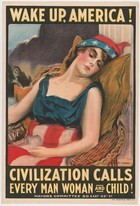 "It's worth recalling that modern propaganda became a global enterprise during the First World War, rather than the second. For the US, that conflict was brief, lasting less than two years. But the ideological output was prodigious." Writing on the hyperallergic.com web site, author D.B. Dowd recalls how George Creel, chairman of the new Committee on Public Information, created the Division of Pictorial Publicity. Out of this organization came many of the familiar WWI posters that Creel thought "must play a great role in the fight for public opinion." Click here to read the entire article. |  While the nation continues to battle with the COVID-19 flu pandemic in 2020, the echos of the World War I flu pandemic continue to be heard. As it turns out, President Donald Trump is not the first Chief Executive to be felled by a pandemic flu. As Dave Roos notes on the History.com web site, "On the night of April 3, 1919, President Woodrow Wilson began to suffer from a violent cough. His condition quickly worsened to the point that his personal doctor, Cary Grayson, thought the president might have been poisoned." However, "The culprit wasn't poison, but the same potent strain of influenza nicknamed the "Spanish flu" that would eventually kill an estimated 20 million worldwide, including more than 600,000 in the United States. Wilson's illness was made even worse by its timing—the president was left bedridden in the middle of the most important negotiations of his life, the Paris Peace Conference to end World War I." Click here to read the entire article on how Wilson's flu may have kept "The War to End All Wars" from achieving that objective. |  At the very end of World War I, American Corporal Lee Duncan picked up two dogs from a litter of German shepherds discovered in the rubble of a kennel near Saint-Mihiel where his unit fought. He named them Nénette and Rin Tin Tin, to evoke the little woolen puppets that the children of Lorraine offered to allied soldiers as a lucky charm. Nénette died during the return crossing to the United States, but Rin Tin Tin, arrived safe and sound on American soil, and quickly demonstrated the exceptional abilities which led him straight to the movie sets of Hollywood. Click here to learn more about how a Doughboy and his dog created an amazing movie and television legacy.
| 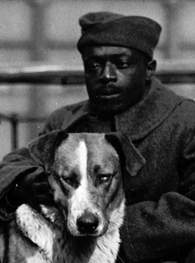 America loves its pets, and according to ownership statistics, dogs are the favorite. More than 60 million American households own a dog, and this shows no signs of slowing down. People love to choose from good dog breeds and find the next member of their family. However, dog's aren't always reserved for being a pet. They can be great guards, investigators, and can play many other roles. In fact, back in World War 1, dogs had several roles that were instrumental in the success of various operations. Click here to learn about 6 of the roles that dogs performed in WWI. | 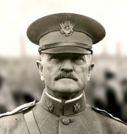 Ron Montonye, Pierce County, ND Veterans Service Officer, was reading a book titled "Yanks – The Epic Story of the American Army in World War I" written by John S.D. Eisenhower. He notes that "As I read this book, it reminded me of many facts that I had either forgotten, or never learned, about World War I. I would like to share a few of these facts, and some thoughts of mine, with you." Click here to read Montonye's entire column from the Tribune newspaper in Pierce County. | 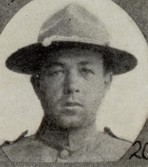 A man is only missing if he is forgotten. Note: As the Covid-19 still has the National Archives closed, thus limiting our abilities to utilize our #1 source for information, Doughboy MIA is taking another long, hard look at many of our active cases. Over the next few months we will be using the space here to update you on the progress of these, as well as present some of our findings on other cases we consider closed. This month we update you on : CPL James Uber, Co. E/112th Infantry/28th Division James Lester Uber was KIA on October 8th, 1918 in the Argonne Forest. Records are sketchy about whether he was buried on the battlefield where he fell, or whether he died in a field hospital and was buried near there. Either way, following the war his remains were never found, despite several attempts by GRS personnel. On Veteran's Day, 2018 during a ceremony at the Meuse-Argonne Cemetery in France, a group from the SGT York Foundation was approached by a French boy and his mother who presented a dog tag to them that the boy had found out on the former battlefield. It belonged to James Uber. The tag was brought home and wound up in the hands of a LTC in the Pennsylvania National Guard, who began trying to track down Uber's family. When we at Doughboy MIA heard the story we launched our investigation and it is our belief that the found tag most likely had been fixed to Uber's battlefield grave marker. In that case, we speculated that if we could locate the area where the tag was found, that would give us a starting point to initiate an investigation using today's technology to search for Uber's remains. The issue was that no one had gotten the boy's name. Then, just as we began plying contacts in France to find the boy, Covid descended and scotched our plans. Recently however, with restrictions in France eased up some, one of our team members - showing dogged determination - managed to actually locate the boy and his family. An interview with him is in the works, but with the new restrictions just announced for France and Germany, it looks like it will be some time before we can get into the field to do initial investigations. Nevertheless, we are excited to see movement in this case. Wish you could help us account for America's missing servicemen from WW1? You can! Consider making a donation to Doughboy MIA today. Simply go to www.ww1cc.org/mia and click the donation link. It's quick, easy, tax deductible, and our non-profit organization uses the money to continue research and, soon, to mount field expeditions - all of which costs money. Your donation gives you the chance to help out and be part of the solution. Remember: A man is only missing if he is forgotten. | | | | | 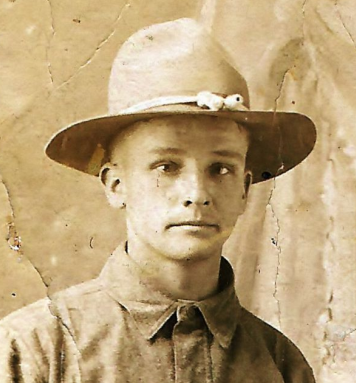 Submitted by: Gerri Brown
Harry Malott served in World War 1 with the United States Army. The dates of service are: Known 04/03/1917-11/1918. Story of Service HARRY E. MALOTT, PFC
Veteran of World War 1
Enlisted - April 3, 1917 – Discharged-Nov. 1918
Landing in Hoboken, New Jersey
Paraded in New York City, N.Y. On April 3, 1917 Harry Malott and his cousin Oliver Smith came to Canton, Illinois to enlist in the army in World War 1. Harry returned from the War In 1918. He had been wounded a couple times but never went to a doctor. His cousin Oliver was killed in battle in World War 1. Oliver is buried in France. When applying for enlistment in the U. S. Army on April 3, 1917, when weighing in Harry was too light and they were going to reject him. He left and drank a lot of water to add weight and returned to weigh again. He was sworn in April 6, 1917, Company 1, 18th infantry as a Wagoner. He served overseas in Europe in World War 1 in France and Germany.
|  | | | |

No comments:
Post a Comment